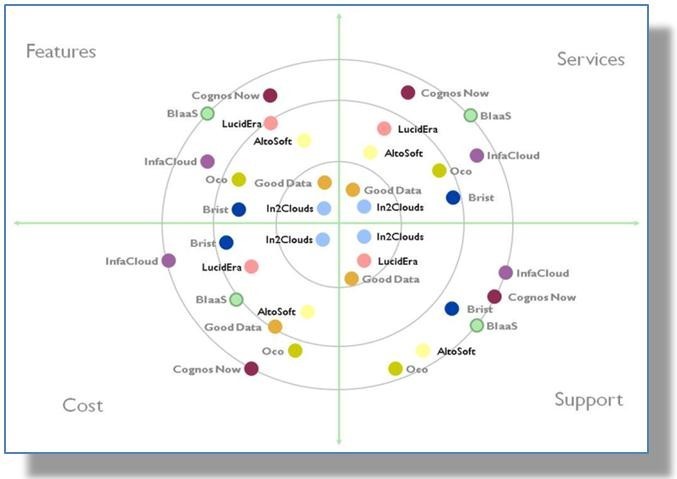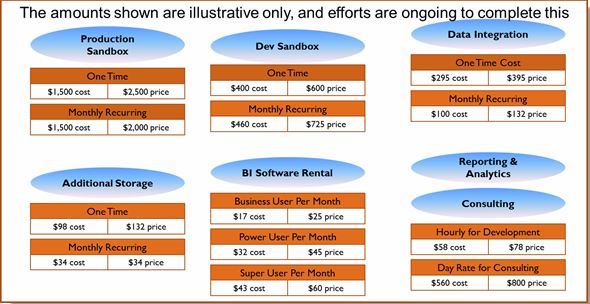Table of Contents
BIaaS – Quick Overview
“Currency of conversation between IT and business is all about agility”. Based on this theme, BIaaS evolved with the intention to help organization business teams in terms of the KRAs mentioned.
Many deep brainstorming sessions resulted in categorizing the services that an IT – BI group can provide. After several iterations, it was concluded to keep all the service activities under the following main five umbrellas
BI as a Service components are,
- Data Hosting
- Data Integration
- Reporting and Analytics
- Consulting
- Training
To sum it up, grab the reader’s attention through an effective headline and hook, and then reward the reader for following through by giving something the reader didn’t have before. In addition, keep the article brief and well focused, and if appropriate, demonstrate how your products and services address the issues raised in the article. By doing so, you stand a good chance of keeping the readers you have and gaining new readers with every issue.
BIaaS Components and Services
1. Data Hosting
This component service includes mainly the data storage, data access, data space and data archive needs of the organization.
- Provision production “sandbox” with EDW data
- Provision development sandbox
- Provision additional storage space
- Provide analysis/reporting software
- DBA support, backups, storage management
- Perform data cleansing routines
- Archive or purge old
2. Data Integration
This component service includes mainly the data import, ETL, information processing needs of the organization.
- Develop/ validate data feed
- Maintain data feed on a daily basis
- Apply ETL transformation logic, if any, that are advised by the business.
3. Reporting and Analytics
This component service includes mainly the reports, dashboards, adhoc analysis, analytics, and ‘Data Scientist’ expertise needs of the organization.
- Repurpose existing/develop new report /dashboard
- Repurpose existing/develop new report /ad hoc analysis
- Repurpose existing/develop a new analytical (statistical, financial, etc.) model
- Request data scientist resource for mining, analysis,etc.
4. Consulting
This component service includes mainly the advisory services, solutions design, and application prototyping needs of the organization.
- Consultation
- Estimation
- Fee-for-service (T&M)
Other than the above consulting services, BIaaS can also provide the following support:
- Query tuning
- DB design
- External data source identification
- Data import design/implementation
- Data extract design/implementation
- Solution design/implementation
5. Training
This component service includes mainly the training Services General BI knowledge Tool specific application prototyping needs of the organization.
- “Contact us” about your training needs
- e-Training
Following are some of the technical training for BIaaS
- Business intelligence overview on tools like SAP BOBJ, SAS
- Information management training on database appliance and Oracle for querying
- SQL query tool overview
- Statistical modeling
- Financial modelling
- Specific technical training courses
What are the Features of BIaaS?
Service offerings can be loaded with hidden fees which can add up. For example, features that seemingly should be included in the core product are charged as extra (for example, fees for additional information sources, fees for integration services to third-party applications and even Office applications). A detailed analysis of leading market BIaaS service providers was done to analyze the cost impacts of this charge back model. It is evident that homegrown BIaaS was cheaper and efficient to meet all services across BIaaS components. A market research on key four parameters like Features, Services, Support and Cost was done.
This following chart depicts the four quadrant analysis of the BI “SaaS” providers to provide the right balance between business needs/impacts and the cost of the service providers. While measuring the capabilities across all service components to meet the organizational business needs, it is observed that BIaaS is stronger against other SaaS providers. This chart eases decisions making about whether to move beyond departmental solutions or to stay with integrated applications based BIaaS platform.

Most of the leading SaaS providers like IBM Cognos Now, Informatica on Demand, Birst, Good Data, etc were considered during this survey to analyze the features of the tool across all the components of BIaaS. Although all of those tools provided useful features, they were not able address the needs of end-to-end services of both data integration and analytics apart from regular consulting and training services.
How Much Would BIaaS Cost?
After a thorough comparison of the services cost for the features required, it is clear that BIaaS is economical in all manner. The evaluation had some of the following considerations:
- A place from where corporate common shared data can be accessed.
- A place where local operational data may be associated to corporate information.
- A place where one or more proof of concepts or tactical data analysis can be carried out.
- A low-cost and rapidly available solution to requirements that do not merit a larger IT project investment.
- A place that a business organization may use for a month or more and not carry the cost of the software, hardware and additional services for longer than the need exists.
With all these services in mind, a complete packaged solution BIaaS is designed.A sample cost charge back model is mentioned below.

Use Case: A Leading US Based Storage Service Provider
The BIaaS program has been recognized as a key strategic initiative for this customer. As a part of this initiative Wipro identified 72 reporting applications that were going to be impacted by customer’s future state ERP platform program named “PROPEL”. The data and reporting functionality of these 72 applications needed to be assessed so that when these applications are replaced by PROPEL, their data could still be accessible and the reporting functions available. In addition, customer had an “IT as a Service” program that was designed to provide IT services in a business consumable form.
To achieve this goal, customer engaged Wipro to execute a quantitative and qualitative initiative to:
- Profile, categorize, and assess current state information and functional requirements of the 72 applications and recommend future state solution alternatives in alignment with the defined customer’s BI
- Define a BI service (BIaaS) consumable by the business in a repeatable, predictable and cost effective
- Ensure completeness of the BIaaS Service Design so that the service can be setup in the tools to request and deliver the
As a part of the BIaaS Service Design, Wipro has documented the details for the Request fulfillment and other related Service Management processes (Incident, Change, Service Level and Capacity Management at a high level) for realization and sustenance of the Business Intelligence as a Service solution for customer.
Supporting facilities are also described, including the service desk support and a recommendation for tracking and storing requests and BIaaS fulfilled requests.
The request fulfillment process along with other related service management processes have been defined at activity level describing the activity tasks to be performed, the input. Finally, use cases are detailed to indicate how each of the five service components would be used.
The Standard Request Fulfillment process will enable customer to further tailor and align it with their way of managing request fulfillment in the future. The following process depicts the best practices to fulfill service requests.



